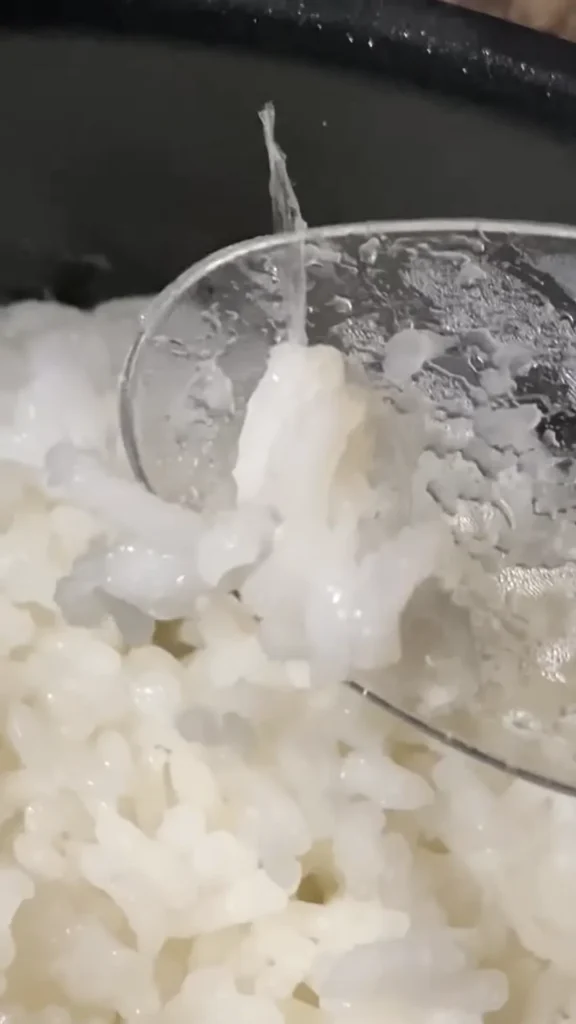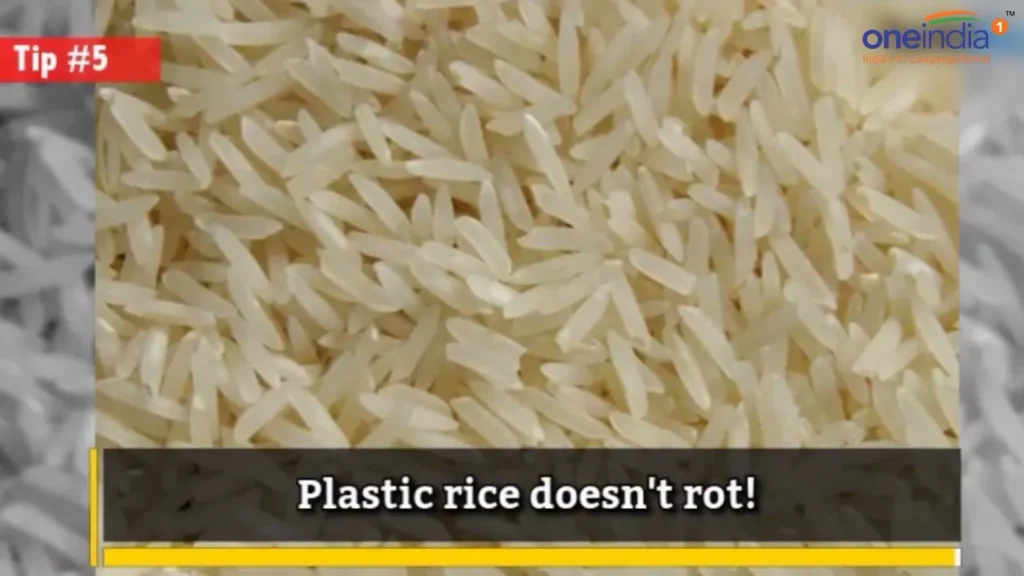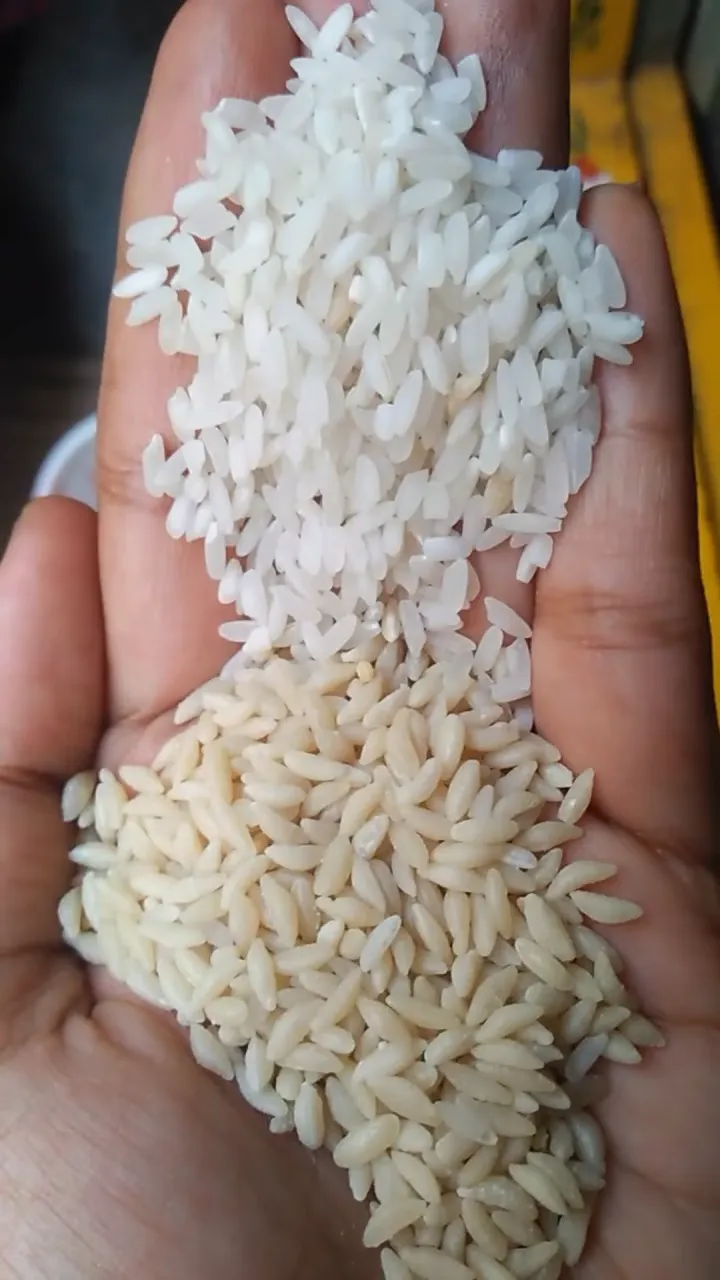Recent years have seen the emergence of a peculiar and concerning phenomenon: plastic rice. Rumors and reports about rice made of plastic circulating in the market have sparked widespread alarm among consumers worldwide. This controversial topic has raised questions about food safety, authenticity, and the implications of consuming such products.
Plastic rice, contrary to what the name might suggest, does not taste like traditional rice. It is reported to have a distinctly unnatural texture and lacks the familiar aroma and flavor of real rice. Often, it’s described as being harder and less absorbent than organic rice, making it easily distinguishable upon cooking.
The issue of plastic rice intertwines concerns about health risks, food fraud, and the broader impact on the environment and economies. This article aims to shed light on what plastic rice is, how it differs from real rice in taste and characteristics, and the wider implications of its existence in the food supply chain.
What is Plastic Rice?
Definition and Composition
The term “Plastic Rice” has become a hotbed of discussion and concern in recent years. Contrary to what the name implies, it does not refer to a specific type of rice made from plastic. Instead, it’s an expression used to describe rice that is allegedly adulterated or manufactured with synthetic materials that resemble plastic. Reports suggest that substances like synthetic resins, potatoes, and sweet potatoes are molded to mimic the appearance of rice grains. These claims, however, often lack scientific backing and are typically fueled by viral social media posts and unverified news sources.
Origins and Spread of Plastic Rice Reports
The origins of the plastic rice scare can be traced back to several online videos and social media posts that surfaced in the early 2010s. These reports primarily emerged from Asian countries, specifically China and India, before spreading globally. The videos showed processes alleged to be the manufacturing of rice from plastic materials, sparking widespread concern and fear among consumers. Despite the lack of concrete evidence and official confirmations, these reports gained significant traction and have led to a persistent urban legend about the existence of plastic rice.
Taste Profile of Plastic Rice
Comparing Plastic Rice to Real Rice

When it comes to the taste profile, plastic rice is claimed to be distinctly different from real rice. However, it’s crucial to note that most of these claims are based on anecdotal evidence rather than scientific analysis. Consumers who allegedly encountered plastic rice report that it has a harder texture, does not soften adequately upon cooking, and lacks the natural aroma and flavor profile of organic rice grains.
Sensory Characteristics: Texture, Flavor, and Aroma
The sensory characteristics of what’s believed to be plastic rice include a more rigid and less absorbent texture compared to real rice. It’s often described as remaining hard or even becoming harder after cooking, which is atypical for genuine rice grains that become softer and fluffier. Flavor-wise, reports suggest a lack of the natural, slightly nutty taste found in real rice. As for aroma, this counterfeit rice is said to be devoid of the subtle, earthy scent that is characteristic of cooked rice.
Health Implications
Short-term and Long-term Health Effects
The alleged health implications of consuming plastic rice are a significant cause for concern. If such a product were to exist and be consumed, it could potentially lead to digestive issues, as the human body is not equipped to digest plastic materials. In the short term, this could result in gastrointestinal discomfort or blockages. Long-term effects are even more alarming, with potential risks including the accumulation of toxic substances in the body, which could lead to serious health conditions. However, it’s important to emphasize that these are hypothetical scenarios, as the widespread existence of plastic rice has not been scientifically proven.
Expert Opinions on Consumption
Food safety experts and health professionals have largely dismissed the idea of plastic rice being a common occurrence in the market. They urge consumers to rely on credible sources and scientific evidence rather than unverified social media claims. In their view, the widespread manufacturing and distribution of plastic rice would not only be economically unfeasible but also easily detectable by food safety authorities.
Identification and Prevention
Visual and Physical Tests for Plastic Rice
To alleviate consumer concerns, several simple tests have been suggested to identify suspected plastic rice. These include:
– **The Water Test**: Real rice grains sink in water, while plastic rice is said to float due to its lighter density.
– **The Fire Test**: Burning a few grains can reveal a plastic-like smell if the rice is counterfeit.
– **The Mold Test**: Genuine rice will develop mold when left out for a few days, whereas plastic rice would remain unchanged.
It’s important to note, however, that these tests are not scientifically validated methods and should be approached with skepticism.
Tips for Ensuring Real Rice Purchase
To avoid any potential risks, consumers are advised to:
– **Purchase Rice from Reputable Sources**: Buy rice from known brands or trusted local suppliers.
– **Check for Certification**: Look for food safety certifications on packaging.
– **Observe the Rice**: Pay attention to the texture, color, and smell of the rice both before and after cooking.
While the fear of plastic rice has taken a foothold in the public consciousness, it’s vital to approach the topic with a critical eye and rely on verified information. The absence of credible evidence supporting the widespread presence of plastic rice in markets around the world suggests that these fears are largely unfounded. Nonetheless, staying informed and cautious about food safety is always a prudent approach.
Global Response and Regulation
Government Actions and Food Safety Regulations
The global response to the plastic rice scare has been marked by proactive measures from governments and food regulatory authorities. Countries where the rumors gained traction quickly implemented checks and balances to ensure the integrity of their rice supply. For instance, in India, the Food Safety and Standards Authority of India (FSSAI) heightened surveillance on rice imports. In China, the General Administration of Quality Supervision, Inspection, and Quarantine (AQSIQ) increased inspections and quality control measures for rice processing.
These governmental actions typically involve:
– **Rigorous Testing Protocols**: Implementing more stringent quality checks at various stages of rice production and distribution.
– **Public Notices and Advisories**: Issuing guidelines and information to educate the public and dispel fears.
– **Collaboration with International Bodies**: Working with organizations like the World Health Organization (WHO) and Food and Agriculture Organization (FAO) to maintain global food safety standards.
Consumer Awareness Campaigns
In addition to regulatory measures, consumer awareness campaigns have played a pivotal role in addressing the plastic rice phenomenon. These campaigns are focused on educating consumers about food safety, how to identify genuine rice, and encouraging the purchase of rice from credible sources. Various platforms, including social media, television, and community outreach programs, have been leveraged to spread awareness.
The Reality Behind the Reports
Debunking Myths: Scientific Analysis

Despite the widespread rumors, scientific analysis has consistently debunked the existence of plastic rice. Laboratories across the world, including those in countries where the rumors were rampant, conducted tests on alleged samples of plastic rice. These studies have repeatedly concluded that the samples were either normal rice grains or grains adulterated with other substances, but not plastic.
Notable findings include:
– **Absence of Synthetic Materials**: Tests showed no presence of the polymers typically found in plastics.
– **Normal Cooking Behavior**: The rice in question cooked and behaved like regular rice, contradicting claims of unusual cooking properties.
Case Studies and Real Incidents
While most plastic rice claims have been disproven, there have been isolated incidents of rice adulteration that fueled these rumors. For example, small-scale cases of rice being mixed with other substances to increase weight and volume were reported. However, these instances were not indicative of a widespread problem but rather isolated acts of fraud.
Environmental and Economic Impact
The Role of Plastic Pollution in Food
The plastic rice scare brings to light a broader concern about plastic pollution in the food supply chain. Microplastics, tiny plastic particles, have been found in various food products and ecosystems, raising questions about their impact on human health and the environment. While unrelated to the concept of plastic rice, this issue underscores the need for comprehensive strategies to tackle plastic pollution.
Impact on Rice Farming Communities
The rumors and subsequent panic about plastic rice have had a noticeable impact on rice farming communities, particularly in countries heavily reliant on rice as a staple food and export commodity. The fear and mistrust generated by these rumors can lead to:
– **Economic Hardship for Farmers**: Decreased demand for rice due to fear can affect the livelihood of rice farmers.
– **Market Volatility**: Rumors can cause fluctuations in rice prices, impacting both producers and consumers.
– **Damage to Reputation**: Perceived threats to food safety can harm the reputation of rice-producing regions and countries.
Alternative Safe Grains and Substitutes
In light of concerns about food safety and the rise of health-conscious consumerism, exploring alternative grains and substitutes to traditional rice has become increasingly popular. These alternatives not only offer varied nutritional benefits but also ensure safety and authenticity in the diet.
Recommendations for Healthier Choices
When considering healthier grain choices, it’s essential to look at both their nutritional profile and culinary versatility. Some noteworthy alternatives include:
– **Quinoa**: A protein-rich grain known for its complete amino acid profile, making it an excellent choice for vegetarians and vegans.
– **Bulgur Wheat**: High in fiber and low in fat, bulgur wheat is a nutritious substitute for rice in many dishes.
– **Farro**: An ancient grain rich in fiber, protein, and a range of nutrients like magnesium and iron.
– **Barley**: Known for its hearty texture and nutty flavor, barley is beneficial for heart health and digestion.
– **Brown Rice**: While still rice, it’s a whole grain alternative to white rice, offering more fiber and a lower glycemic index.
These grains not only diversify the diet but also provide a safeguard against the potential risks associated with adulterated food products.
Exploring Other Safe Grain Options
Beyond the more common alternatives, several other grains deserve attention for their health benefits and safety:
– **Millet**: Gluten-free and rich in antioxidants, millet is a versatile grain that can be used in a variety of dishes.
– **Amaranth**: Another gluten-free option, amaranth is packed with proteins and has a higher calcium content than most grains.
– **Black Rice**: Also known as ‘forbidden rice’, it boasts an impressive antioxidant profile.
– **Sorghum**: This grain is not only nutritious but also environmentally friendly, requiring less water to grow.
These grains are not only safe and healthy but also contribute to a more sustainable and diverse agricultural system.
Conclusion
Summary of Key Insights
The journey through the complexities of the plastic rice phenomenon reveals several key insights:
– **Debunking Myths**: Scientific analysis and food safety authorities have largely discredited the rumors of plastic rice.
– **Importance of Reliable Sources**: The spread of misinformation highlights the need for relying on credible sources for food-related news.
– **Global Response and Regulation**: Governments and international bodies have taken significant steps to ensure food safety and public trust.
– **Consumer Awareness**: Educating consumers is crucial in combating food fraud and promoting safe eating habits.
Final Thoughts and Recommendations
As we navigate the ever-evolving landscape of food safety and nutrition, several recommendations emerge:
– **Stay Informed**: Consumers should stay updated with reliable information and be discerning about the sources of their news.
– **Explore Alternatives**: Diversifying one’s diet with alternative grains can not only enhance nutritional intake but also reduce reliance on a single food source.
– **Prioritize Food Safety**: Being proactive about where and how food is sourced is key to ensuring its safety and authenticity.
– **Support Local and Ethical Farming**: Purchasing from local and ethical sources can help support the economy and ensure the quality of food products.
In summary, while the plastic rice scare has been a cause for concern, it also serves as a reminder of the importance of food safety, the power of information, and the benefits of dietary diversity. By staying informed, exploring safe and nutritious alternatives, and prioritizing food safety, consumers can navigate their dietary choices with confidence and security.
Why does my rice smell like plastic?
Rice smelling like plastic can be attributed to a few different causes, most of which are not related to the rice actually containing plastic. Here are some possible explanations:
1. **Packaging**: If your rice is stored in a plastic container or bag, especially if it’s a new container or a type of plastic that tends to emit a stronger odor, the smell can transfer to the rice. This is more likely if the rice has been stored for a prolonged period.
2. **Chemical Contaminants**: Sometimes, chemicals used during the processing or transportation of rice might leave a residual smell. This could include pesticides or treatments used to keep the rice from spoiling or being infested by pests.
3. **Type of Rice**: Certain types of rice have a natural aroma that might be misinterpreted as a plastic-like smell. For example, Basmati rice has a natural, nutty aroma that is quite distinct.
4. **Cooking Utensils**: The smell could also come from the cooking utensils or the cooking environment. If plastic utensils are used or if the cooking pot has a plastic handle that gets heated, it might emit a smell that could be absorbed by the rice.
5. **Mold or Bacterial Growth**: Improper storage of rice can lead to mold or bacterial growth, which might produce an unusual smell. This is more likely in humid or damp conditions.
6. **Cross-Contamination**: If the rice was stored near other materials or substances with a strong odor, it could absorb that smell.
If your rice smells like plastic, it’s important to first identify the source of the smell. Ensure that the rice is stored properly in a dry, cool place, and consider transferring it to a glass or metal container if you suspect the storage method is the cause. If the smell persists or if you have any concerns about the safety of the rice, it might be best to avoid consuming it.
Frequently Asked Questions
What Exactly is Plastic Rice?
Plastic rice is a term used to describe a substance that looks similar to rice but is allegedly made from synthetic materials. Reports suggest it’s manufactured using a mix of potatoes, sweet potatoes, and synthetic resin. However, scientific evidence and official investigations have often debunked the existence of such a product in the market.
How Can You Identify Plastic Rice?
Identifying plastic rice involves conducting simple tests like the water test, where the rice is placed in water and observed for unusual floating behavior. Other methods include the fire test, where grains are burned to check for a plastic smell, and the mold test, where cooked rice is monitored for mold development over a few days.
Is Plastic Rice Harmful to Health?
While the concept of plastic rice raises significant health concerns, there has been no credible evidence of its widespread existence or consumption. However, if such a product were to exist and be consumed, it would undoubtedly pose serious health risks due to the indigestible and potentially toxic nature of plastics.
Has Plastic Rice Been Found in Any Country?
There have been sporadic reports and rumors about plastic rice in various countries, but most of these have been debunked by food safety authorities. These reports often emerge from social media and lack scientific backing or credible evidence.
What Should Consumers Do to Avoid Fake Rice?
Consumers are advised to purchase rice from reputable sources and brands. Additionally, being aware of the rice’s appearance, texture, and cooking behavior can help in identifying any anomalies. Staying informed and cautious is key to avoiding any potential food fraud.


